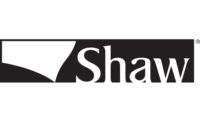Shaw Launches Sound Advisor Web-Based Acoustics Tool

Dalton, Ga. -- Shaw Industries Group has introduced an innovative, patent-pending tool to showcase the impact ceiling and floor construction, as well as flooring and underlayment selection, have on room acoustics. Known as Sound Advisor, the web-based tool helps users make more informed design and interior product selection decisions. The tool can be accessed via the Patcraft, Philadelphia Commercial, Shaw Contract, and Shaw Floors Multifamily sites with additional sites under development.
Shaw has also developed an hour-long continuing education unit (CEU) that qualifies for one credit from IDCEC as well as AIA. The CEU is also available via sales representatives from all Shaw brands, and Shaw will present a GBCI-approved session at this year’s Greenbuild conference.
Research shows that the constant sounds of everyday life, the hum of an appliance, co-workers talking, music in the background, have a powerful impact on people’s wellbeing. Too much noise can lead to stress, fatigue, lack of focus, anxiety, and lengthier healing times. From student apartments and hotels to offices and hospitals, sound can make or break the effectiveness of a building. The human health impact can also have a negative business impact, including loss in productivity or decreased revenue as a result of apartment turnover or fewer hotel night stays.
Building certifications now take acoustics into account when evaluating a space's impact on human health and the environment. The U.S. Green Building Council LEED v4 includes a focus on airborne sound and in-room sound for commercial buildings, schools, and healthcare facilities. The International WELL Building Institute has set benchmarks for the numerous ways a building and its systems can support human health and wellness, including sound abatement.
Even without such certifications, owners, managers, housing directors and contractors recognize the value in noise abatement when creating a superior, competitive building.
“Floor covering and other products are labeled with an impact insulation class (IIC) rating; however, IIC ratings on a product are not enough. They don’t tell the whole story,” said Jay Henry, director of innovation at Shaw Industries. “Recognizing this gap in the marketplace, we’ve conducted extensive testing to provide an estimated IIC rating based on specific floor and ceiling construction, paired with flooring types and installation methods where underlayment is and isn’t used. This testing produced not only an IIC number but a sound file that allows a user to actually hear the difference.”
Shaw’s efforts stand to bring more science-based decision-making to building design, room design and product selection. The company’s research-centric approach will shape how its teams advise designers and facility managers through product selection and how Shaw develops innovative products in the future.
For more information, visit shawinc.com.
Looking for a reprint of this article?
From high-res PDFs to custom plaques, order your copy today!





